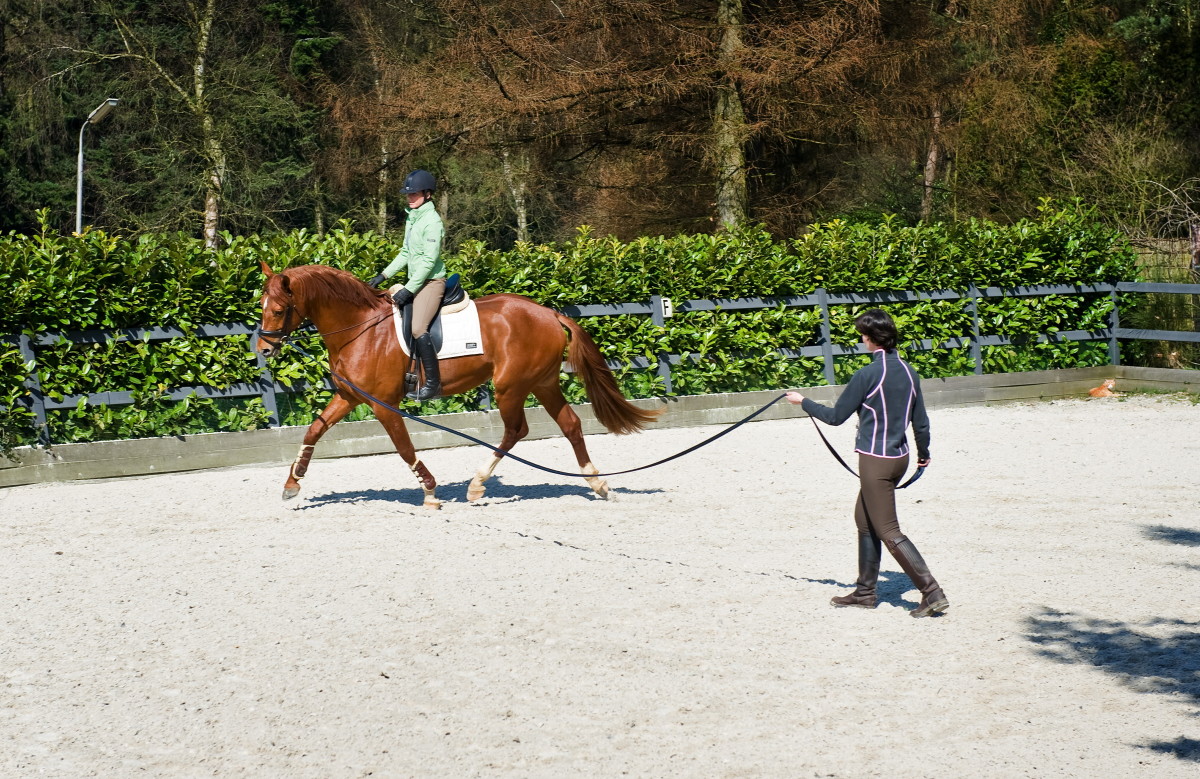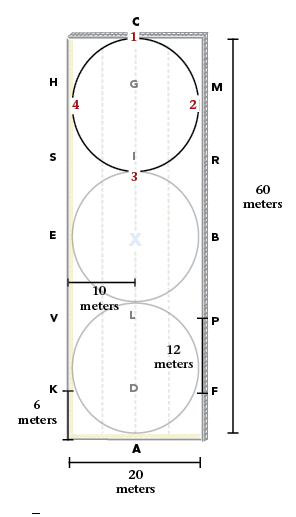Q: Do I use different aids in the first few weeks or months of a young horse’s training or can I aid him like an older horse? If there are differences, what are they? My horse has just turned 3 years old, knows how to walk, trot and canter on the longe line and I am planning to introduce him to the rider soon. —Nancy Rowland of Aurora, Ontario, Canada
A: If possible at all, avoid using different aids in the first few weeks or months of your young horse’s training. Your goal is to explain the aids to him and achieve that he accepts, trusts and follows your aids willingly. This training phase is the basic education of the young horse and it should be based on the Training Scale, especially with regard to the first three components—rhythm, relaxation and contact. It will take about one year to complete this phase.

Arnd Bronkhorst – arnd.nl
You appear to have taken the first steps in the right direction to help your horse understand the aids by working him on the longe line. Correct longeing introduces the horse to the driving aids (using the longe whip to move your horse forward) and to the restraining aids (using the longe line). Using your voice in a calming or encouraging way is an important tool to support the driving and restraining aids of the longe line, for example, encouraging your horse to move forward or reducing the tempo.
If your horse has learned to walk, trot and canter and stay relatively balanced with a swinging back on the longe line, it’s time to introduce side reins to establish a connection between the girth and the horse’s mouth. This prepares your horse to establish contact from the rider’s hands to the bit under saddle. Instead of a common side rein, I prefer to use the so-called Vienna or triangle reins, which encourage the horse to stretch long and low over the topline without shortening the neck. In any case, the side reins should not force a contact. Leave the side reins long enough so the horse can stretch into them with a slightly long neck.
The very first few rides should also be performed on the longe line. The main goal is for your horse to find his balance with the rider’s weight on him. At this very early stage of riding, the driving and restraining aids will be primarily given by the person who is longeing the horse. However, the rider will have a connection between her hands and the horse’s mouth: a very soft contact to the bit. The right amount of contact conveys security to the horse, which he is already familiar with from the longe line. Once your horse moves freely forward and is relaxed on the longe line, the rider can gradually apply her aids together with the tools the person who is longeing the horse uses. For example, walk–trot transitions with the help of the person who is longeing the horse are suitable exercises to introduce the forward-driving leg aids.
The disadvantage of riding on the longe line is that the horse must balance the rider’s weight on a bent line. Because it is more difficult for the horse, it can have a negative influence on the horse’s motivation to move forward. For this reason, after you and your horse have established a certain degree of communication on the longe line, continue riding off the longe line. A person on the ground carrying a longe whip should still be there to help to move the horse forward. Since the horse is already accustomed to a longe whip, you may ride with a crop to support your leg aids to encourage your horse to move forward. I don’t recommend spurs at the early stage of a young horse’s training as they may cause the horse to become dull to the leg aids and may cause a sensitive horse to panic.
The rein aids play a major role during the first few rides off the longe line to steer the horse. To introduce turns, move your inside hand away from the horse’s neck into the direction you want to go. In the beginning of teaching your horse to steer, keep it simple by using the whole arena, large circles or diagonals.
Voice commands are quickly understood by the horse and very helpful to train a youngster, but be careful not to overuse them—just like any other aid. For example, a calming voice helps to slow the horse down, a more upbeat, energetic tone encourages the horse to move forward and a kind voice conveys praise.
Although your goal is riding with fine and subtle aids, in the first few months of training it is often unavoidable that you’ll have to increase your aids until you get the correct response. This will teach your horse to react more quickly because he wants to avoid the pressure. However, make sure that you are not going to harm your horse by pulling excessively on the reins or overdoing the whip, etc. Remember to immediately praise your horse when he responds correctly.
The training of a young horse shapes the entire development of your equine partner. It requires time, empathy and patience. The training should be performed by an experienced rider with a balanced and independent seat and sensitive aids.
Sabine Ense is a USDF bronze and silver medalist and a USDF “L” Education Program graduate with distinction. She has competed throughout the FEI levels in both the U.S. and her native Germany. Her father, Horst Ense, was highly influential in German equestrian sports and sport-horse breeding and was awarded the German Federal Cross of Merit for his lifetime of service. Based in Grants Pass, Oregon, Ense owns and operates Lone Pine Stables.











